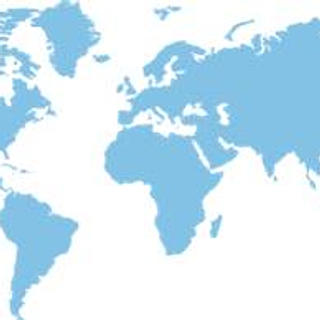Essential Water Jetting Training for Oil and Gas
- Management Team
- Oct 15
- 4 min read
Water jetting is a powerful technique used in various industries, especially in oil and gas. It involves using high-pressure water to cut through materials, clean surfaces, and perform maintenance tasks. However, the effectiveness of water jetting relies heavily on proper training. In this post, we will explore the importance of water jetting training, the skills required, and how it can enhance safety and efficiency in the oil and gas sector.
Water jetting is not just about using a machine. It requires knowledge, skill, and an understanding of safety protocols. Without proper training, workers can face serious risks. This is why investing in water jetting training is essential for any organization in the oil and gas industry.
Understanding Water Jetting
Water jetting uses high-pressure water streams to perform various tasks. These tasks can include cutting, cleaning, and even drilling. The pressure can reach up to 40,000 psi, making it a highly effective method for many applications.
Applications in Oil and Gas
In the oil and gas industry, water jetting is used for:
Cleaning pipelines: Removing debris and buildup to ensure smooth operations.
Cutting materials: Such as metal and concrete for repairs or modifications.
Environmental remediation: Cleaning up spills and contaminants.
These applications highlight the versatility of water jetting. However, each task requires specific techniques and safety measures.
The Importance of Training
Training is crucial for anyone involved in water jetting. Here are some key reasons why:
Safety First
Water jetting can be dangerous. High-pressure water can cause severe injuries if not handled correctly. Training ensures that workers understand the risks and know how to operate equipment safely.
Skill Development
Proper training helps workers develop the necessary skills. This includes:
Understanding equipment operation.
Learning maintenance procedures.
Mastering safety protocols.
These skills are vital for effective and safe water jetting.
Compliance with Regulations
The oil and gas industry is heavily regulated. Training helps ensure compliance with local and national safety standards. This not only protects workers but also helps companies avoid legal issues.
Key Components of Water Jetting Training
A comprehensive water jetting training program should cover several essential components.
Equipment Familiarization
Workers should become familiar with the equipment they will be using. This includes understanding:
Different types of water jetting machines.
Nozzle types and their applications.
Maintenance and troubleshooting techniques.
Safety Protocols
Safety training is a critical part of any water jetting program. Workers should learn about:
Personal protective equipment (PPE) requirements.
Emergency procedures in case of accidents.
Safe work practices to minimize risks.
Practical Experience
Hands-on training is essential. Workers should have the opportunity to practice using equipment in a controlled environment. This helps build confidence and competence.
Assessment and Certification
After training, workers should be assessed to ensure they have mastered the necessary skills. Certification can provide proof of competency, which is valuable for both workers and employers.
Enhancing Efficiency through Training
Proper training not only improves safety but also enhances efficiency. Trained workers can complete tasks more quickly and accurately. This can lead to:
Reduced downtime.
Lower operational costs.
Improved overall productivity.
For example, a trained worker can effectively clean a pipeline in a fraction of the time it would take an untrained worker. This efficiency can have a significant impact on project timelines and budgets.
Real-World Examples
To illustrate the importance of water jetting training, let’s look at a couple of real-world examples.
Case Study 1: Pipeline Cleaning
A major oil company faced issues with pipeline blockages. They decided to implement a water jetting training program for their maintenance team. After training, the team was able to clean the pipelines more effectively. They reduced cleaning time by 30% and minimized the risk of accidents. This not only saved money but also improved the reliability of their operations.
Case Study 2: Environmental Remediation
In another instance, a gas company needed to clean up a spill site. They trained their workers in water jetting techniques specifically for environmental remediation. The trained team was able to remove contaminants quickly and safely. This not only helped the environment but also ensured compliance with regulatory requirements.
Choosing the Right Training Program
When selecting a water jetting training program, consider the following factors:
Accreditation
Ensure the program is accredited by relevant industry bodies. This guarantees that the training meets industry standards.
Experienced Instructors
Look for programs led by experienced instructors. They should have practical experience in water jetting and a strong understanding of safety protocols.
Comprehensive Curriculum
The training should cover all essential components, including equipment operation, safety protocols, and practical experience.
Flexibility
Choose a program that offers flexible scheduling. This allows workers to complete training without disrupting operations.
The Future of Water Jetting Training
As technology advances, water jetting techniques will continue to evolve. Training programs must adapt to these changes. This includes incorporating new technologies and methods into the curriculum.
Embracing Technology
New technologies, such as remote-controlled water jetting machines, are becoming more common. Training programs should include these advancements to prepare workers for the future.
Continuous Learning
Water jetting training should not be a one-time event. Continuous learning opportunities, such as refresher courses and advanced training, can help workers stay updated on best practices and new technologies.
Final Thoughts
Investing in water jetting training is essential for any organization in the oil and gas industry. It enhances safety, develops skills, and improves efficiency. By prioritizing training, companies can protect their workers and ensure smooth operations.
As the industry continues to evolve, staying ahead of the curve with proper training will be crucial. Embrace the importance of water jetting training and watch your operations thrive.

By focusing on training, you are not just investing in your workforce, but also in the future of your operations.





Comments